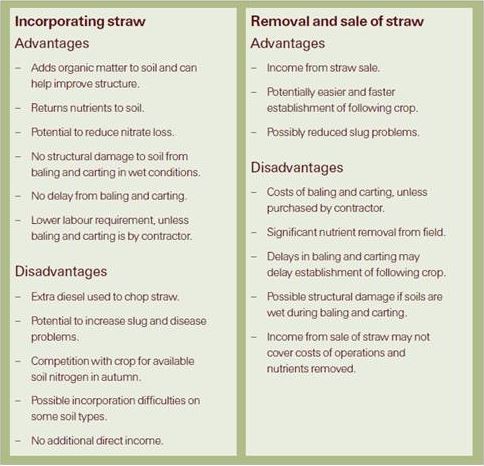What should I do with straw this harvest?
As SOYL's technical manager, I'm responsible for our crop nutrition strategy and at this time of year, many clients and colleagues ask me the same question: should I remove my straw and sell it?
Dealing with straw on the farm can be complicated. For some, it's a valuable soil management tool or a source of income and for others, just a problem that has to be dealt with. Each option has its benefits and drawbacks.
Straw is currently selling for around £50/t, about £10/t more than last year. Recent good weather will potentially mean that straw is dry and can be baled immediately and the early start to harvest should make logistics easier, so fields will be cleared in good time for autumn drilling. This all sounds appealing, but is it the best option for your farm? Let's take a look at the options and factors to consider.
Nutrient
Straw contains large amounts of nutrients, particularly P, K and Mg. The table below shows the volume that will be removed by a crop if straw is baled at harvest.
| Crop | Straw | P205 kg/ha | K20 kg/ha |
| Wheat | Incorporated | 7.8 | 5.6 |
| Winter Wheat | Removed | 8.4 | 10.4 |
| | | | |
| Nutrient content straw | | yield x 0.6 | yield x 4.8 |
A 10 tonne crop of wheat will therefore remove an additional 6 kg/ha of phosphate and 48kg/ha of potash if straw is removed. At today's fertiliser prices, this will cost £20-£25/ha to replace as when the nutrients are removed from the soil, their value is being removed too.
These figures are based on the typical ratio of straw to grain yield which is used if the actual tonnage of straw removed is not known. If bale tonnages per hectare are known then a different calculation method can be used.
Organic matter
Incorporating straw into the soil will have a beneficial effect on soil organic matter, but the actual rise from straw incorporation is very small and levels will increase slowly. Straw incorporation also helps the "workability" of soils and can lead to a reduction in wear and tear and fuel costs of using machinery.
Straw incorporation will be beneficial if no other sources of organic material are available and organic matter levels are low at below 5%. If organic matter levels are already good or manures are available to spread then baling should be considered.
If a straw for muck agreement is an option, then the amount of P and K in any muck should be calculated as this may be more than the amount of P and K removed in the straw. Manures will also increase soil organic matter levels faster than straw incorporation and is therefore a more efficient way of improving organic matter.
Agronomy
Straw incorporation does not show any conclusive negative effect on disease and weed populations. However, when straw is incorporated, slug populations are likely to double. When slug pressures are high, the decision on whether to chop or bale straw may have a significant agronomic impact through slug damage and costs of control, with the estimated benefit of straw removal being around £20/ha. Consideration should also be given to cultivation methods. Shallow tillage may leave straw at seed depth and potentially affect subsequent establishment.
Harvest logistics and machinery
A farmer who sells straw in the swath at £8-£15/t (c.£25-£50/ha) rather than chopping it for incorporation may expect to save £4-£5/ha from not chopping straw. A farmer who bales, carts and stores his straw will typically achieve a net return of £80-£150/ha.
The cost of any damage caused by running machinery must be taken into account. For example, consequent soil compaction could cost £55/ha to fix by sub soiling. Delays to establishment can also lead to yield loss.
The cost of baling and carting and whether this will be carried out by contractors or on farm also needs to be considered.
A combination of all these factors and fluctuations in the fertiliser and straw market will mean that each farm and year will be unique. Speak to your local advisor for guidance specific to your individual circumstances.
Simon Griffin
Technical Manager
For specific advice for your business related to this blog or any other aspect of precision crop production get in touch with SOYL.
As a subscriber, you’ll receive email alerts each time a new blog is published so you can always stay updated with the latest advice and insights from our experts




Comments